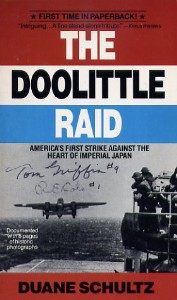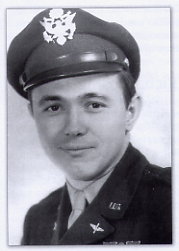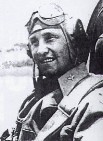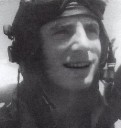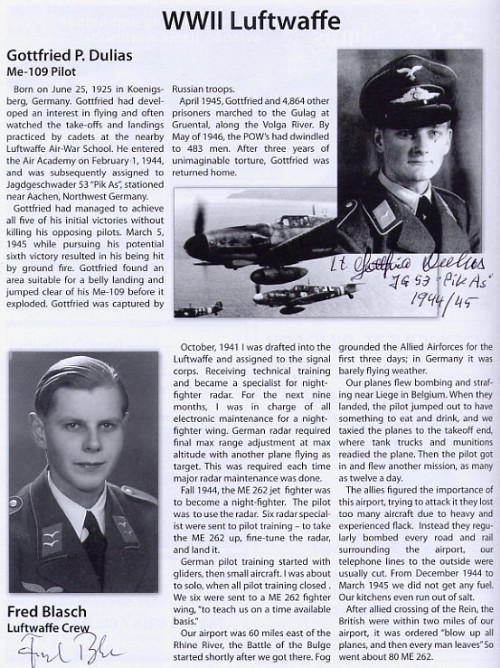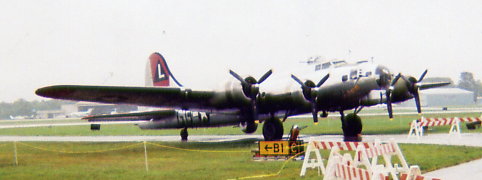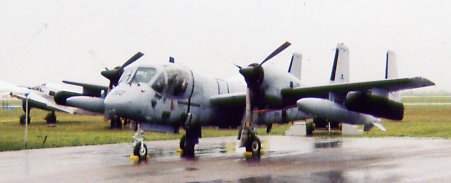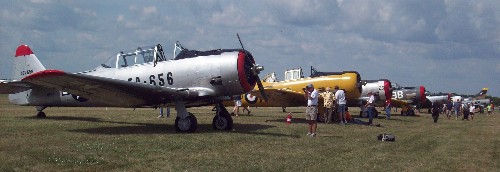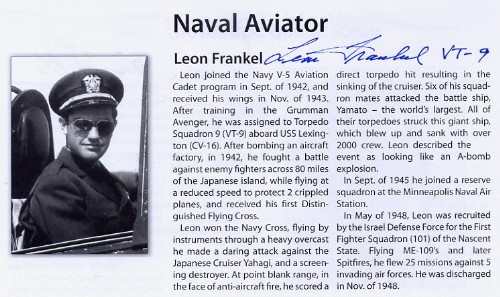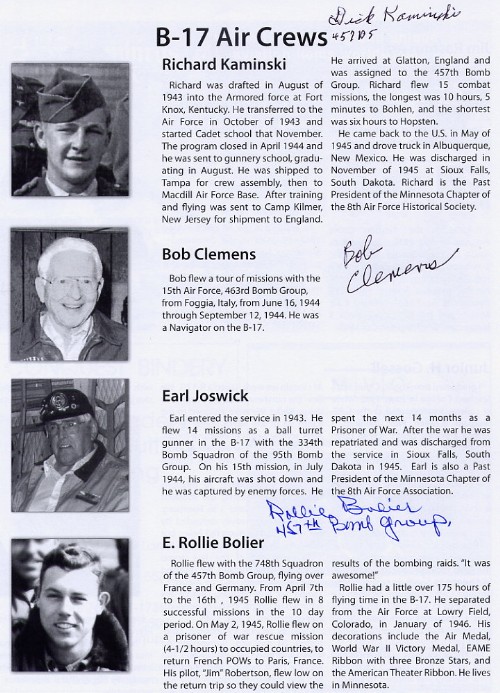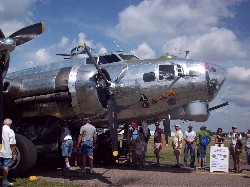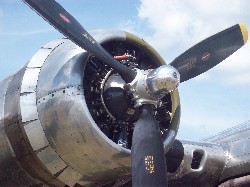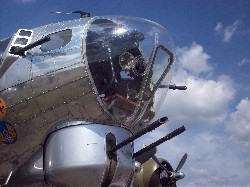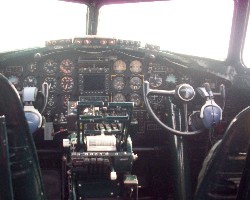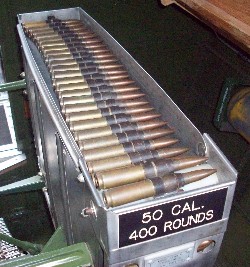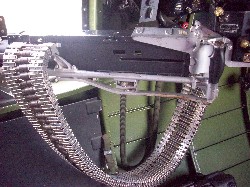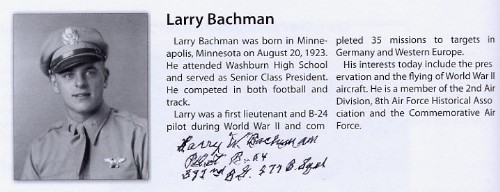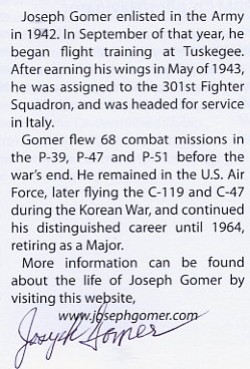Living History, World War II Airmen at the Air Expo
When I read every book about World War II in my junior and senior high school libraries in the seventies, more than thirty years had already passed since the war, so it was absolutely amazing to me thirty more years later to meet men who participated in historical events I read about. This I got to do on Saturday, August 18, 2007 at the Wings of the North Air Expo at the Flying Cloud Airport in Eden Prairie, MN. Although the totally rainy weather grounded the vintage aircraft, it thinned the crowd and so I had no problem talking with these heroes all I wanted.
|
|
The Doolittle Raid took place four months after Pearl Harbor at a time when the Japanese were kicking our butts all over the Pacific, and so bombing the Japanese homeland had a significant psychological impact that far exceeded the physical damage inflicted. To pull it off, sixteen B-25 Mitchell medium bombers were launched from the carrier Hornet on a one-way mission to China.
Since each plane had a crew of five (pilot, co-pilot, navigator, bombardier, gunner), eighty fliers participated in the raid. Four didn't survive the mission. Sixteen more didn't survive the war, including three who were executed by the Japanese and one who died in Japanese captivity. Of the sixty who survived the war, thirteen remain alive sixty-five years later, and here I was talking with two of them!
Both signed the cover of my book. They were in excellent shape for guys in their nineties, looking more like in their seventies. Dick Cole was Jimmy Doolittle's co-pilot in the lead bomber. The dude flew with Doolittle himself! Tom Griffin was the navigator on the nineth plane. He was later captured by the Germans. I asked him how he was treated compared to his comrades who were captured by the Japanese, and he called it a "picnic".
|
The Black Sheep Squadron was popularized by the seventies television show starring Robert Conrad as the legendary Greg "Pappy" Boyington. Although the show portrayed the pilots as a collection of drunken misfits, the real Boyington formed the squadron out of a pool of reserve pilots. Jim Hill recalled the last mission when Boyington was shot down and captured by the Japanese. The squadron was disbanded afterwards and the pilots reassigned to other units. Hill told me the squadron has a modern incarnation, consisting of Harrier jets (the ones that hover).
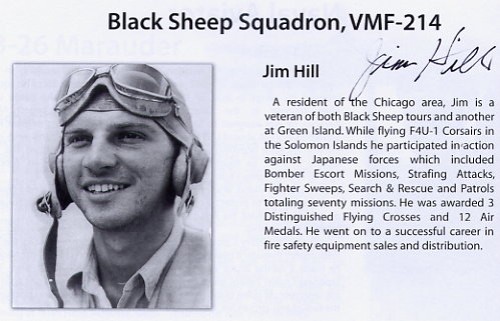 |
|
Dutch Van Kirk was the navigator of the Enola Gay, the plane that dropped the atomic bomb on Hiroshima on August 6, 1945. I asked him about the shock wave after they dropped it, and he said not too bad. How big was it? About the size of the table he was sitting at. He sat in the plane with the stinking bomb! Blows my mind. Did he know how big the blast would be? He was told it would be huge, and it was bigger than he expected, although it was a pea-shooter compared to today's nukes.
|
|
|
|
Wayne Johnson (left) and Don Anderson (right) were Flying Tigers. Well, not actually. The Tigers were volunteer fighter pilots who protected the supply route between India and China before America entered the war. Johnson and Anderson were assigned to this important mission after we entered the war. The treacherous route over the Himalaya mountains was the only means of getting supplies to China because the Japanese controlled the Chinese coast. The route started in hot and steamy Indian Jungle, but Johnson and Anderson were fortunate to be based in a part of China with better weather. They currently live in Minnesota.
|
|
Little did these guys know they would be sitting at an airport sixty-five years later with their former enemies. The first fellow had the misfortune of being captured by the Russians, who almost worked him to death. He was only allowed to return to Germany after he was too sick to work, but too stubborn to die. Only 1% of the Germans captured by the Russians came back. The second fellow told me how proud he was to have been an American citizen longer than he had been a German.
2008 Update
The weather was much better when I went again on Saturday, August 16, 2008.
This dude flew off the namesakes of two famous aircraft carriers, the Lexington and Yorktown. The original Lexington was sunk at the Battle of the Coral Sea in May 1942. The original Yorktown took damage in that battle, was quickly repaired, and was sunk at the Battle of Midway a month later. Frankel's Lexington is now a museum at Corpus Christi, TX and the Yorktown is at Charleston, SC.
Unlike the picture above from 2007, in which the B-17 bomber sat by itself on the runway in the rain, it was flying this year and open for tours between flights. This particular plane was manufactured near the end of the war and never saw action before the war ended. It's one of a very few B-17's still flying.
Wow! This guy flew 35 missions, and I don't think his plane was ever shot down, although he told me it got awfully shot up a lot. He bombed targets all over Germany, including Berlin.
